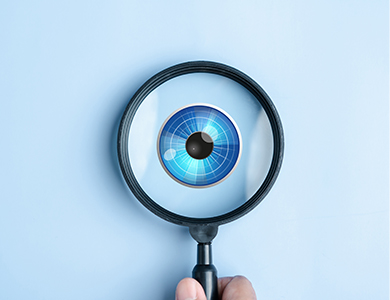
Myopia, also known as nearsightedness, is becoming increasingly common among children. As a parent, understanding what myopia is, how to recognize its symptoms, and why early detection matters can make a significant difference in your child’s vision and quality of life.
What Is Myopia?
Myopia is a refractive error where distant objects appear blurry while close objects are seen clearly. This occurs when the eyeball is too long or the cornea is too curved, causing light entering the eye to focus in front of the retina instead of directly on it. Myopia usually develops in childhood and often progresses as children grow.
There are several factors that contribute to the development of myopia in children. Genetics plays a significant role - children with one or both parents who are nearsighted have a higher risk of developing myopia themselves.
Lifestyle habits are also important. Kids who spend a lot of time on close-up tasks, such as reading, using digital devices, or doing homework, and spend less time outdoors, are more likely to become nearsighted.
Environmental factors can contribute as well. Limited exposure to natural daylight has been linked to both the onset and progression of myopia, making outdoor activity an important part of maintaining healthy vision.
Recognizing the Symptoms in Children
Children may not always realize they have vision problems, so it’s important for parents to watch for common signs of myopia, such as:
• Squinting to see distant objects, like the board at school
• Sitting very close to the television or holding books close to the face
• Complaints of headaches or eye strain
• Difficulty seeing clearly while playing sports
• Reduced academic performance or reluctance to participate in activities that require distance vision
Early Detection Is Key
Routine pediatric eye exams are crucial for detecting myopia early and monitoring its progression. Early detection allows for timely intervention, which can help slow down or manage the progression of myopia and reduce the risk of more serious vision problems later in life. Even if your child does not show obvious symptoms, regular eye exams can catch vision changes that may go unnoticed.
When to Consider Myopia Control Treatment
If your child is diagnosed with myopia, your eye doctor may discuss myopia control options. These treatments are designed to slow the progression of myopia and may include:
• Specially designed contact lenses or glasses
• Orthokeratology (Ortho-K) lenses worn overnight
• Prescription eye drops
• Lifestyle recommendations, such as increasing outdoor time
Myopia control is especially important for children whose vision is changing rapidly or who have a family history of high myopia. Our optometrist can guide you on the best options based on your child’s specific needs.
Schedule a Myopia Control Screening Today
Myopia is a growing concern for children, but with early detection, regular eye exams, and proactive management, you can help protect your child’s vision now and in the future.
If you have concerns about your child’s vision or want to learn more about myopia control treatment, schedule a pediatric eye exam at InnoVision Optometry. Visit our office in Rowland Heights, California, or call (626) 593-8700 to book an appointment today.









